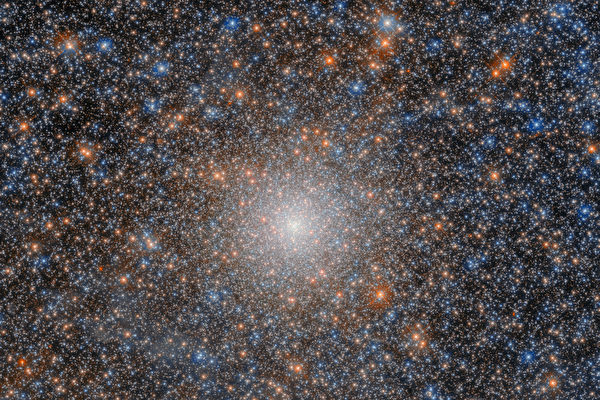NGC 2005 is a globular cluster in the Large Magellanic Cloud, which serves as evidence for the theory that galaxies evolve through mergers, like fossils in the universe, providing astronomers with insights into the characteristics of ancient stars.
In a press release issued by the National Aeronautics and Space Administration (NASA) on June 14, the Hubble Space Telescope captured images of NGC 2005.
Located approximately 750 light-years from the center of the Large Magellanic Cloud, NGC 2005 is a satellite galaxy of the Milky Way, itself about 162,000 light-years away from Earth.
While the globular cluster NGC 2005 itself may not be particularly rare, it appears quite unique compared to its surrounding environment.
Globular clusters are dense clusters composed of tens of thousands to millions of stars. Their density means they are tightly bound by gravity, making them highly stable. This stability contributes to the longevity of globular clusters, with lifespans extending to billions of years, typically composed of very old stars.
Studying globular clusters in space is akin to examining fossils on Earth. Fossils provide insights into the characteristics of ancient flora and fauna, whereas globular clusters offer insights into ancient stars.
Current theories of galaxy evolution predict galaxies merging with one another. Astronomers believe that the larger galaxies observed in the modern universe are the result of smaller galaxies merging.
If this viewpoint holds true, evidence may be found to suggest that the oldest stars in nearby galaxies originate from different galactic environments. Globular clusters, housing ancient stars and exhibiting remarkable stability, serve as ideal laboratories to test such hypotheses.
NGC 2005 is one such globular cluster providing evidence for the theory of galaxy evolution through mergers. The chemical composition of the stars within NGC 2005 differs significantly from those in the Large Magellanic Cloud.
This indicates that the Large Magellanic Cloud has experienced a merger with another galaxy in its history. While the other galaxy may have merged or dissipated long ago, NGC 2005 stands as an ancient witness to this event, preserving its legacy.

